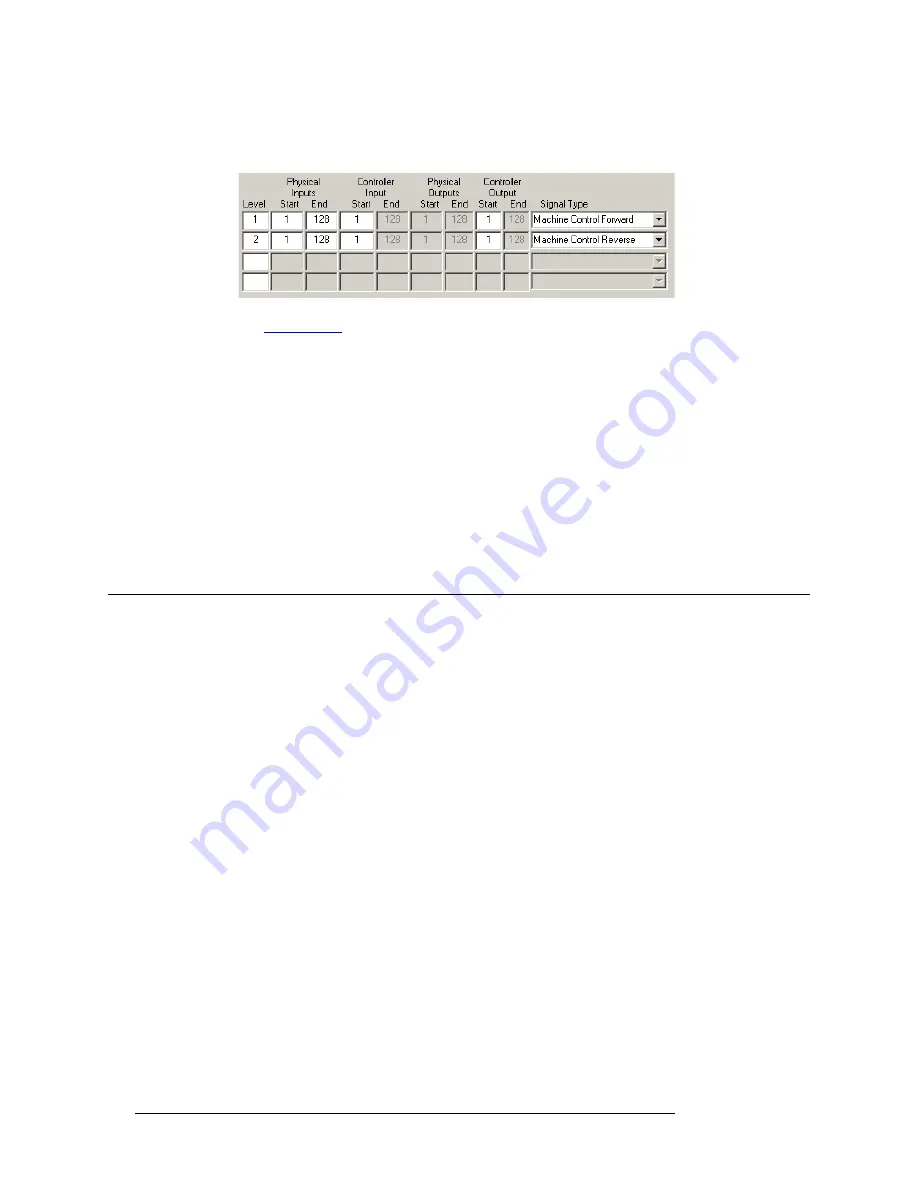
30
Rev 1.7 • 18 Aug 10
4. Configuration
UniConfig—Stage 2
9 Populate the physical level section according to the requirements of your system. There are sev-
eral options, especially concerning signal type. This is an example:
See
on page 7 for more information.
10 After specifying the physical levels, go back to the ‘Expansion’ section, and verify that you
have chosen the right option (standalone, master, or slave) and that you have entered the correct
range of inputs and outputs for the option you have chosen.
11 When everything is correct, click ‘Write All’ (next to ‘Read All’) to send the configuration data
to the NV5256. Now the router control card has its IP address and its basic partitioning.
12 Repeat this entire process for each router control card in each NV5256 frame. The redundant
control card in any frame should be configured the same as the primary control card.
S
You can ignore the ‘Card Address’ field. It is not used.
You can now proceed to stage 2. You will rarely, if ever, repeat stage 1.
UniConfig—Stage 2
When stage 1 is complete, you can perform more detailed configuration and you can use a higher
speed connection to do so. You can use the Ethernet connection to the control card or you can use
the ‘DIAG’ serial port for the control card. Both are at the rear of the NV5256.
If you are running UniConfig on an NV9000 server, the Ethernet connection should already have
been established. If you are using a separate PC to configure the router, you might need to reconfig-
ure your PC’s Ethernet port. This can be a nuisance on a separate PC. The serial alternative is easy
and very fast, but not quite as complete.
To use the DIAG port (which typically operates at 38,400
Baud), you will use a PC COM port set to
the same Baud rate as the DIAG port.
In stage 2, you will configure the port type for each port. (You are advised to plan your connections
carefully beforehand.)
You can also perform routes in UniConfig if you wish to test the operation of the router.
Stage 2 requires some knowledge of the different port types and the semantics of machine control
routing.
Configure Port Types
Follow these steps to configure the port types:.
1 Connect either to the DIAG port of the router control card you are configuring or to its Ethernet
port. Launch UniConfig, choose ‘Configuration’ from the Window menu, and click ‘Read All’
to get the control card’s current configuration.






























